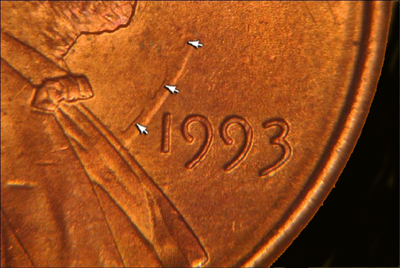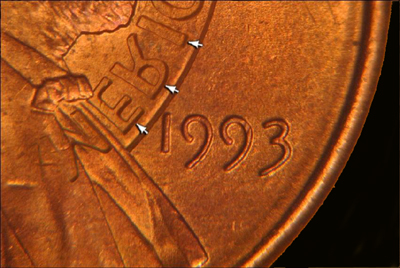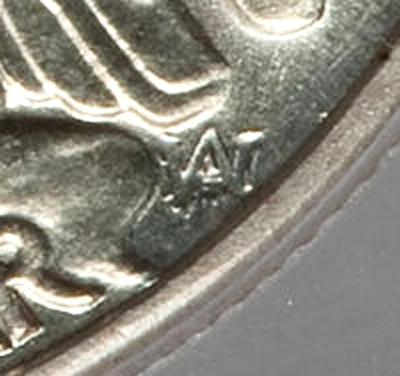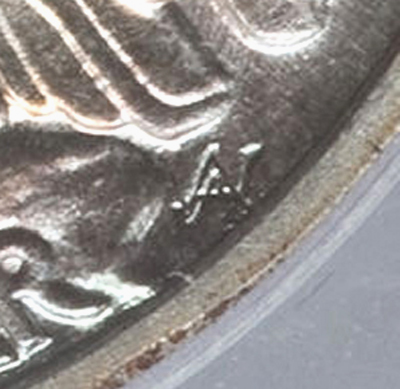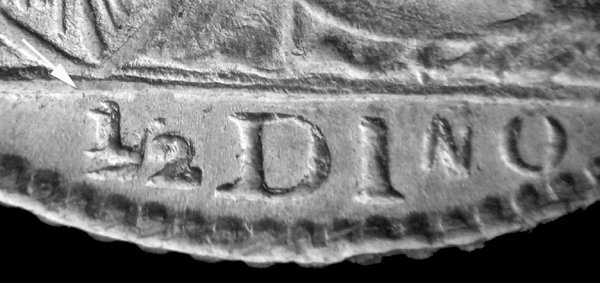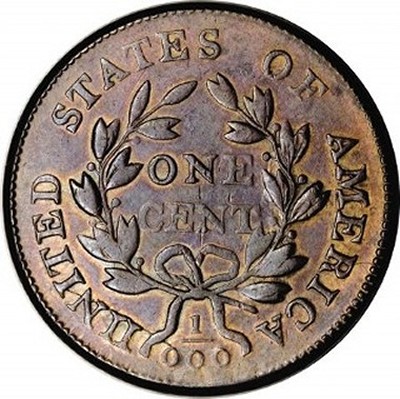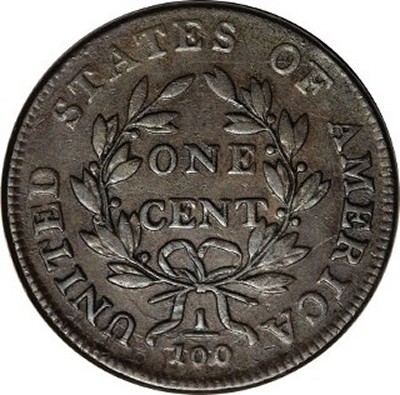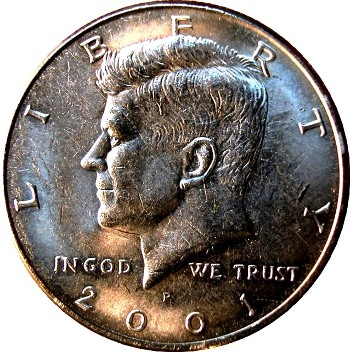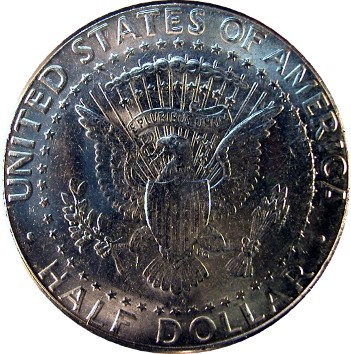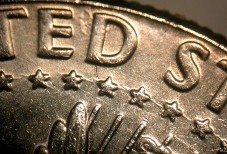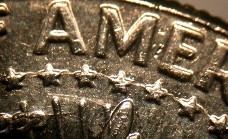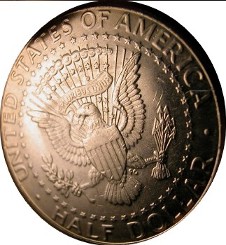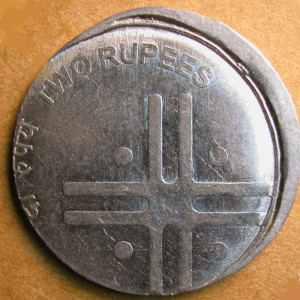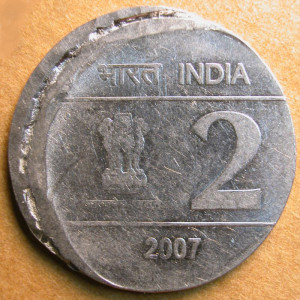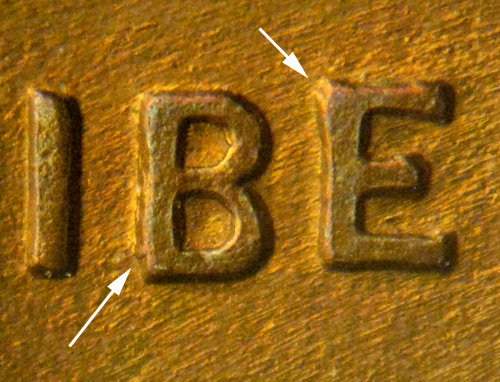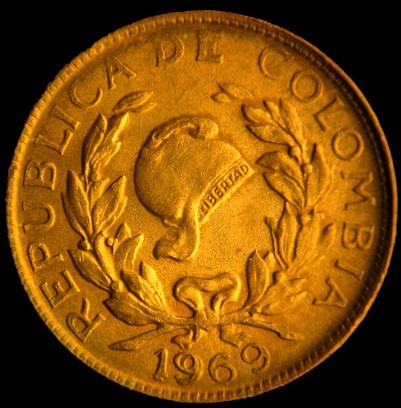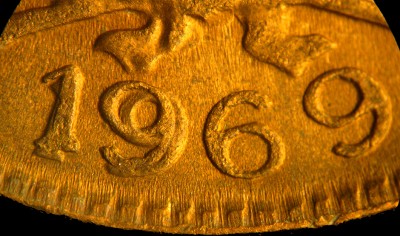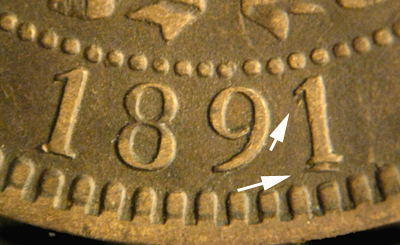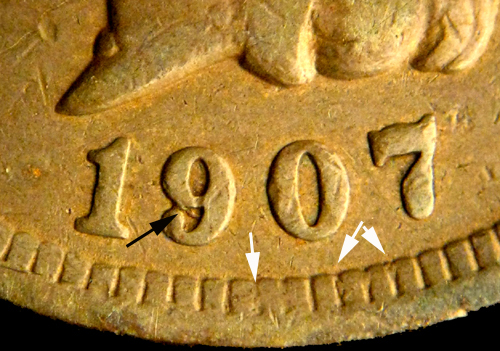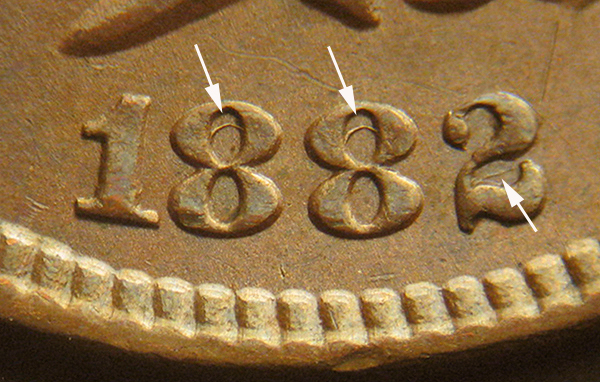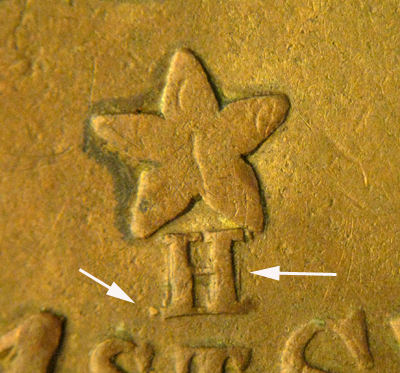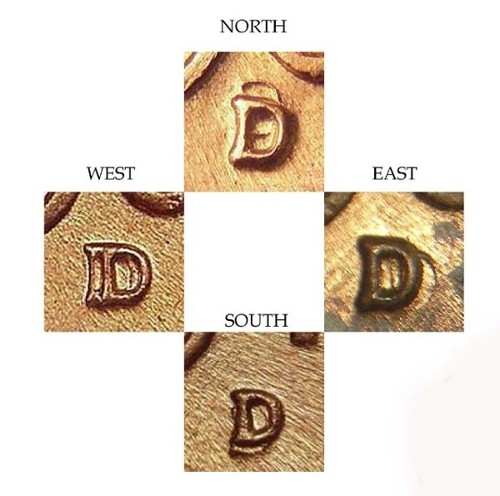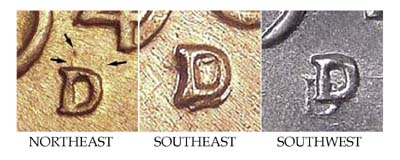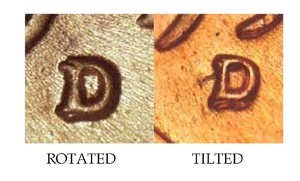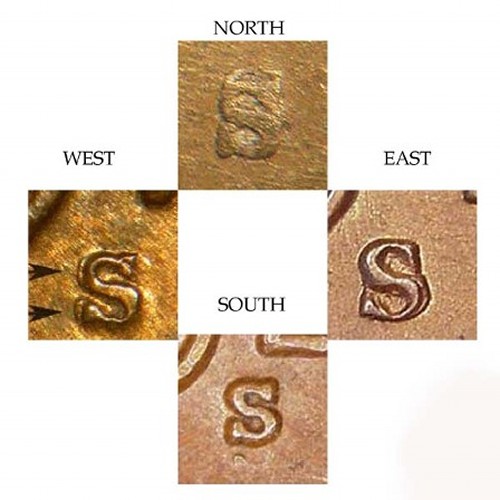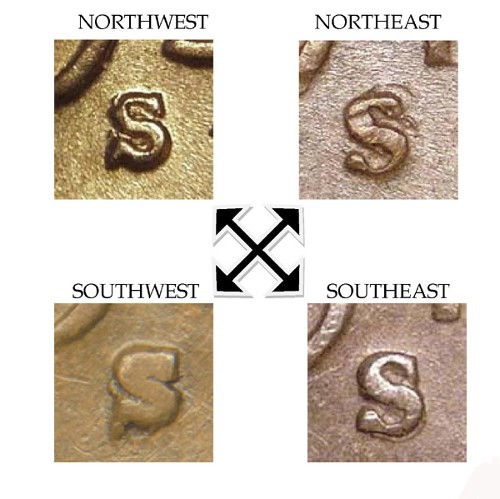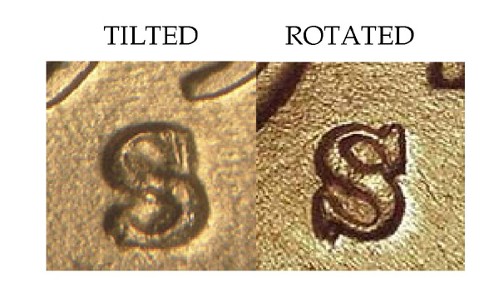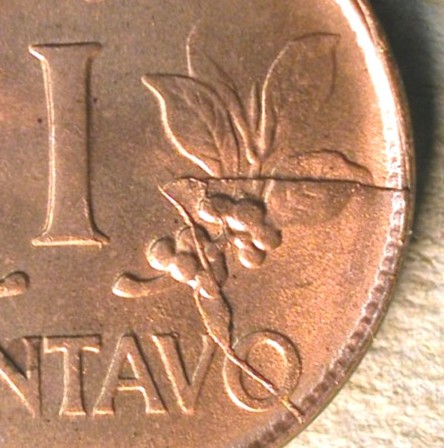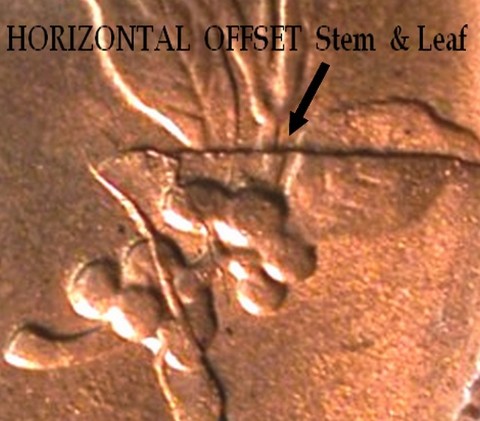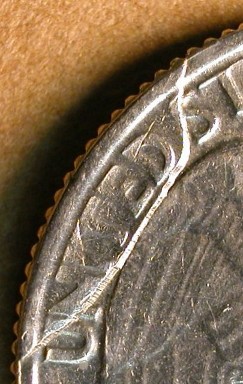PART IV. Die Errors:
Die Clashes:
Radically Misaligned Die Clashes
Definition: A radically misaligned die clash is one that is produced by a hammer die with a huge horizontal misalignment and also a vertical misalignment (tilted die). Only the downward-tilted pole of the hammer die contacts the anvil die. Design transfer can occur on either die or both dies. The mark left on the hammer die by the anvil die generally consists of a curved impression of the edge of the field portion of the die and some adjacent letters. The clash marks are invariably light.
These peculiar clash marksare unlikely to be caused by a press malfunction during a press run. It is believed that the dies contact each other during installation, perhaps as one die is dropped on the other.
Among modern coins, radical MAD clashes are known among Lincoln cents from 1991 – 2000 and some foreign coins (notably Spain and Canada). Some examples appear among Indian cents as well. The images below show a radical misaligned die clash with an accompanying overlay, which shows the relative position of the dies when they did clash.
For more information concerning this unusual die clash, click HERE
